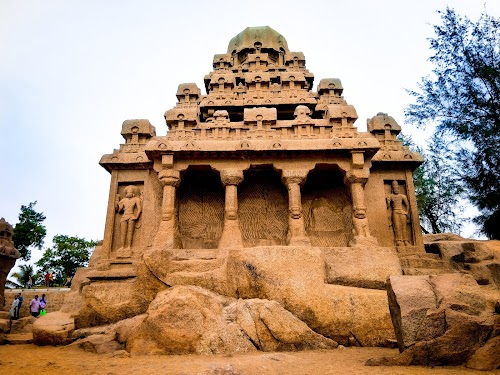
Discover Incredible Places in Mahabalipuram
Explore our handpicked collection of breathtaking destinations across India
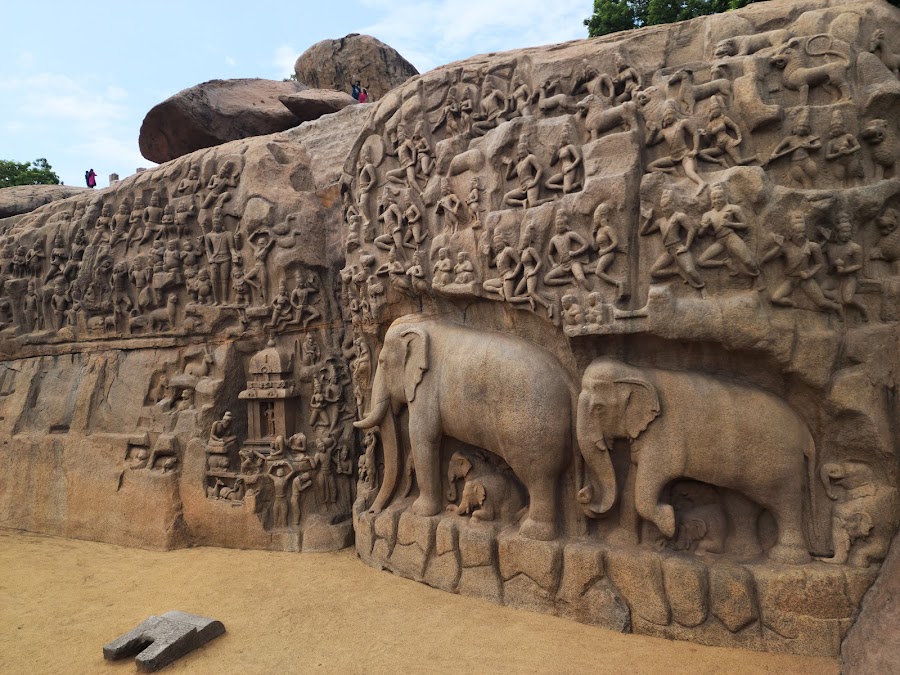
Arjuna's Penance
Arjuna's Penance, also known as Descent of the Ganges, is a colossal open-air bas-relief monolith in Mahabalipuram. Carved out of two massive boulders, it's one of the largest rock reliefs in the world. The intricate carvings depict scenes from the Mahabharata, including Arjuna's penance to obtain Shiva's weapon, the Pashupatastra. Some scholars believe it represents the descent of the Ganges River to Earth. The sheer scale and detail of the carvings are breathtaking, showcasing the Pallava dynasty's artistic prowess. Keep an eye out for the natural cleft in the rock, ingeniously used to represent the river's descent. It's a must-see for history buffs and art lovers alike.
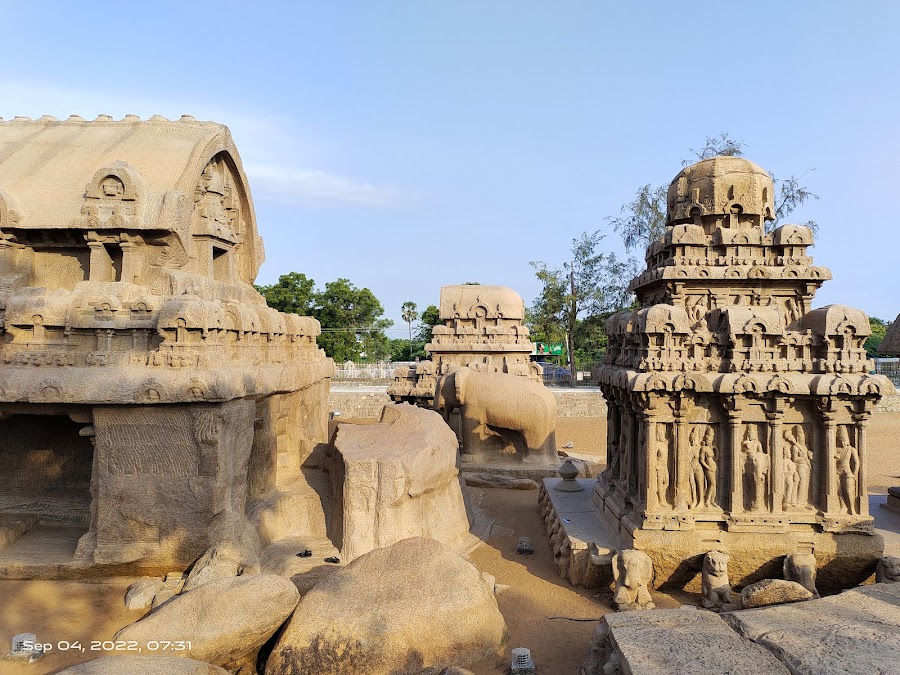
Five Rathas (Pancha Rathas)
The Pancha Rathas, meaning 'Five Chariots', are a magnificent complex of monolithic rock-cut temples in Mahabalipuram. Each ratha is carved from a single piece of granite rock, representing a unique style of Dravidian architecture. These structures are named after the Pandavas (Arjuna, Bhima, Yudhisthira, Nakula, and Sahadeva) and Draupadi from the epic Mahabharata. However, the names are merely labels, as the structures have no connection to the epic. The complex showcases intricate carvings, sculptures, and architectural details, offering a glimpse into the artistic prowess of the Pallava dynasty. The unfinished state of some of the rathas adds to their mystique, inviting visitors to ponder the creative process behind these ancient wonders. It's a must-visit for anyone interested in history, architecture, and Indian mythology.
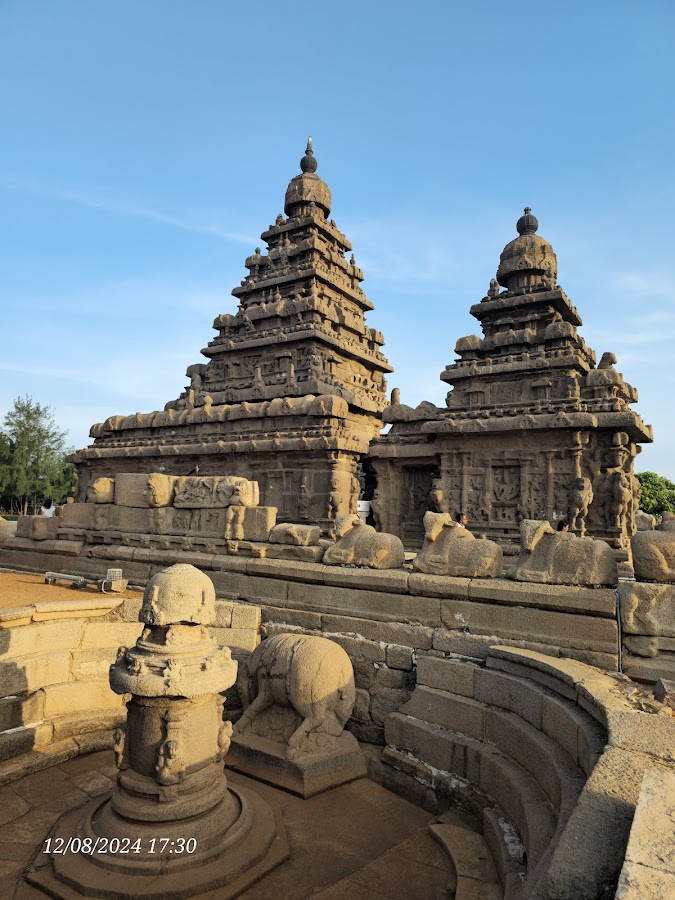
Shore Temple
The Shore Temple, a UNESCO World Heritage site, stands majestically on the shores of the Bay of Bengal in Mahabalipuram. This iconic temple complex, dating back to the 8th century, is a stunning example of Dravidian architecture under the Pallava dynasty. Comprising three temples, dedicated to Lord Shiva and Lord Vishnu, it's renowned for its intricate carvings, sculptures, and monolithic structures. The temple's unique location, right on the coastline, makes it a breathtaking sight, especially during sunrise and sunset. The sound of waves crashing against the rocks adds to the spiritual and serene atmosphere. Visitors can explore the complex, admire the detailed artwork, and learn about the rich history and mythology associated with this ancient marvel. It’s a must-visit destination for history buffs, architecture enthusiasts, and anyone seeking a tranquil and visually captivating experience.
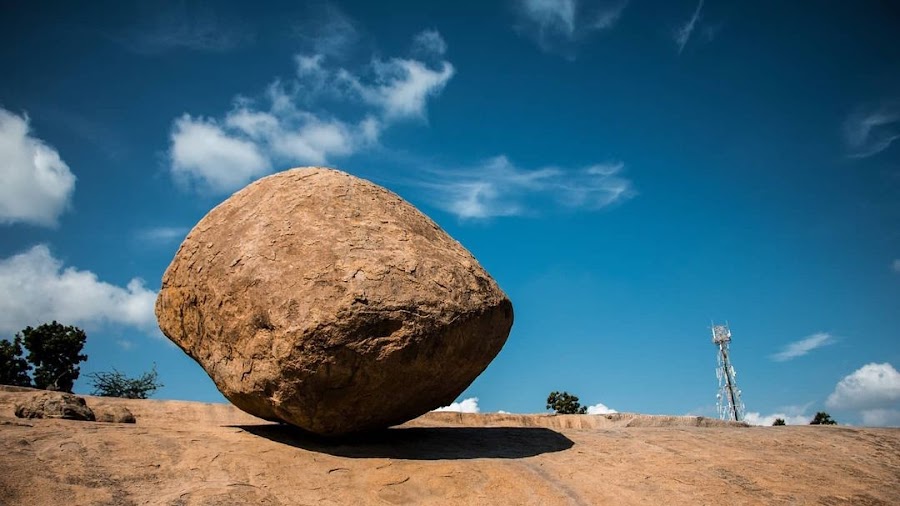
Krishna's Butter Ball
Krishna's Butter Ball is a giant, precariously balanced rock boulder located in Mahabalipuram, India. This massive granite boulder, estimated to weigh over 250 tons, appears to defy gravity as it rests on a smooth, sloping rock surface. It's a popular tourist attraction, drawing visitors who marvel at its seemingly impossible position and attempt to dislodge it (unsuccessfully, of course!). The site offers fantastic photo opportunities and is a testament to the natural geological wonders of the region. The surrounding area is also dotted with other rock formations and carvings, making it a worthwhile stop on any Mahabalipuram itinerary. You can spend hours taking pictures from different angles and trying to understand the science behind it.
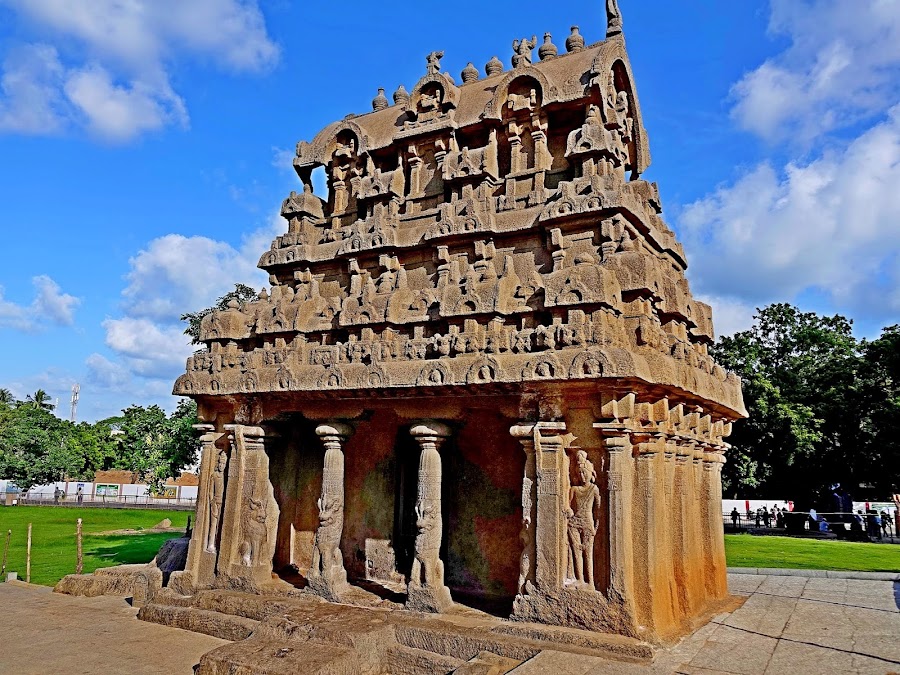
Ganesh Ratha Temple
The Ganesh Ratha is one of the finest examples of monolithic Indian rock-cut architecture, part of the famous Pancha Rathas complex in Mahabalipuram. Though called a 'ratha' (chariot), it's actually a temple carved from a single granite boulder. Its pyramidal structure and intricate carvings are characteristic of Dravidian architecture. The temple is dedicated to Lord Ganesha, although it's believed the original intention might have been to dedicate it to Lord Shiva or Goddess Durga. The incomplete state of the structure adds to its mystique, allowing visitors to appreciate the raw artistry and the ambitious scale of the Pallava sculptors' vision. It's a must-see for anyone interested in ancient Indian art and architecture.
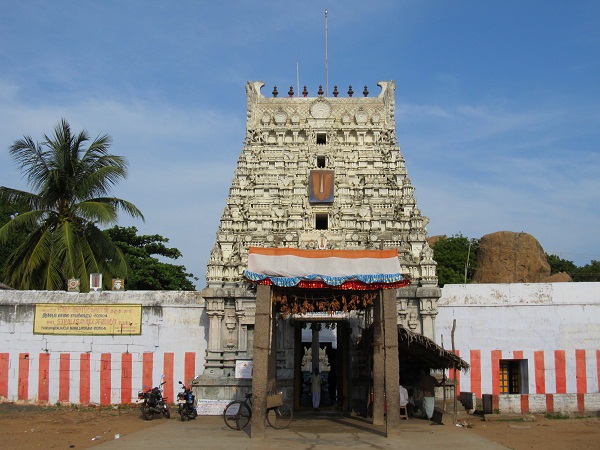
Thirukadalmallai
Thirukadalmallai, also known as Sthalasayana Perumal Temple, is a significant Vishnu temple located in Mahabalipuram. It's renowned for being the birthplace of Bhoothathazhwar, one of the twelve Alwar saints of South India. The temple is situated close to the sea and is believed to have protected Mahabalipuram from being submerged during a past deluge. The presiding deity, Sthalasayana Perumal, is in a reclining posture, and the temple architecture reflects typical Dravidian style. The temple provides a serene and spiritual experience, distinct from the more prominent shore temples, offering a glimpse into the region's rich religious heritage. It is a must-visit for devotees and those interested in exploring the cultural and religious landscape of Mahabalipuram.
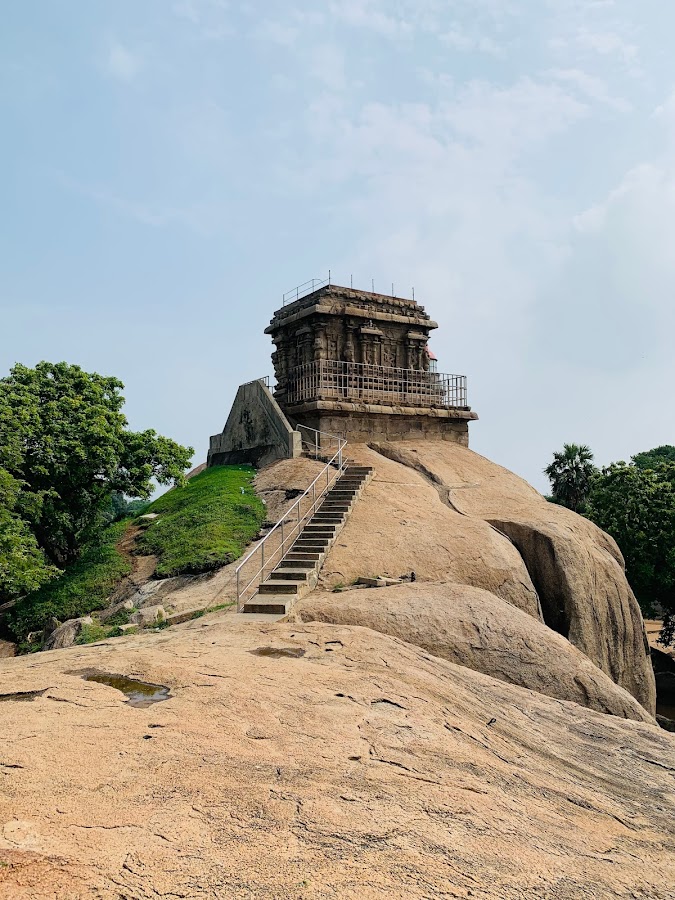
Olakkannesvara Temple
The Olakkannesvara Temple, perched dramatically on a rocky outcrop overlooking the Bay of Bengal in Mahabalipuram, offers stunning panoramic views. This ancient shrine, also known as the Old Lighthouse Temple, is dedicated to Lord Shiva. Its weathered stone structure and serene ambiance create a captivating experience for visitors. The temple's location provides a unique perspective of the coastline and the surrounding monuments of Mahabalipuram. The climb to the temple is relatively easy, making it accessible to most travelers. The sound of the waves crashing against the rocks below adds to the spiritual atmosphere, making it a perfect spot for reflection and photography. Don't miss the opportunity to witness a breathtaking sunrise or sunset from this vantage point.
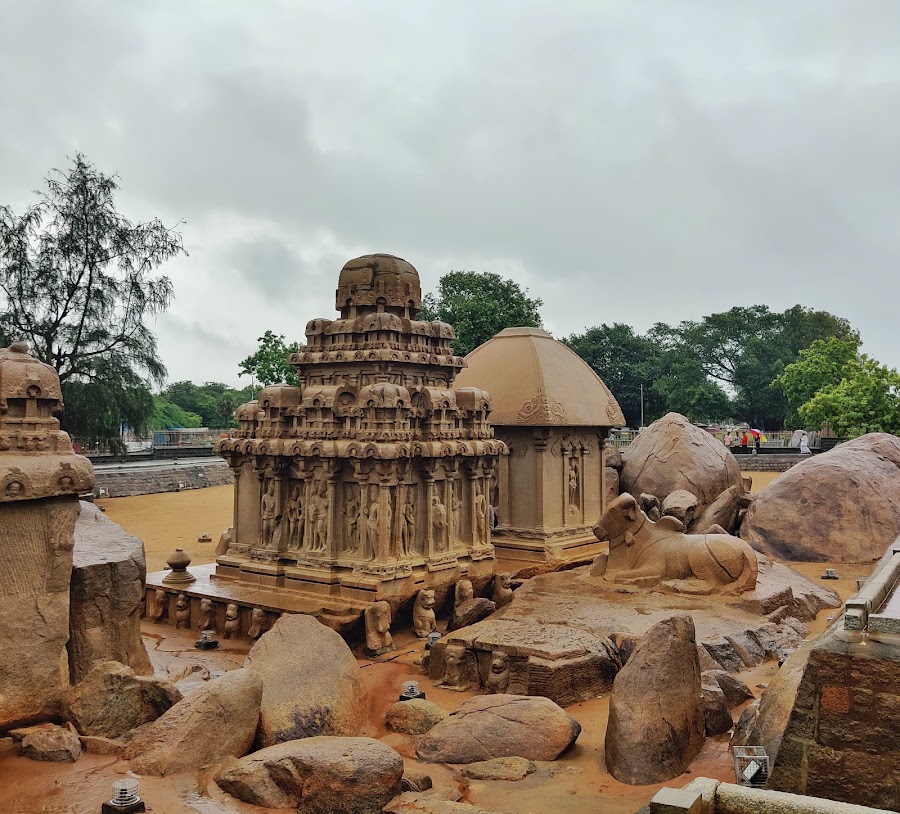
Panchapandava Cave
The Panchapandava Cave, also known as the Mandapa, is a rock-cut cave temple in Mahabalipuram, showcasing early Indian rock-cut architecture. It's a significant part of the Group of Monuments at Mahabalipuram, a UNESCO World Heritage Site. The cave features intricately carved pillars and reliefs depicting scenes from Hindu mythology. While the name suggests a connection to the five Pandava brothers from the epic Mahabharata, there's no direct evidence linking the carvings specifically to them. The cave offers a glimpse into the Pallava dynasty's artistic and architectural prowess. Visitors can admire the detailed sculptures, the cave's impressive scale, and the peaceful atmosphere. It's a must-see for history buffs and anyone interested in ancient Indian art.
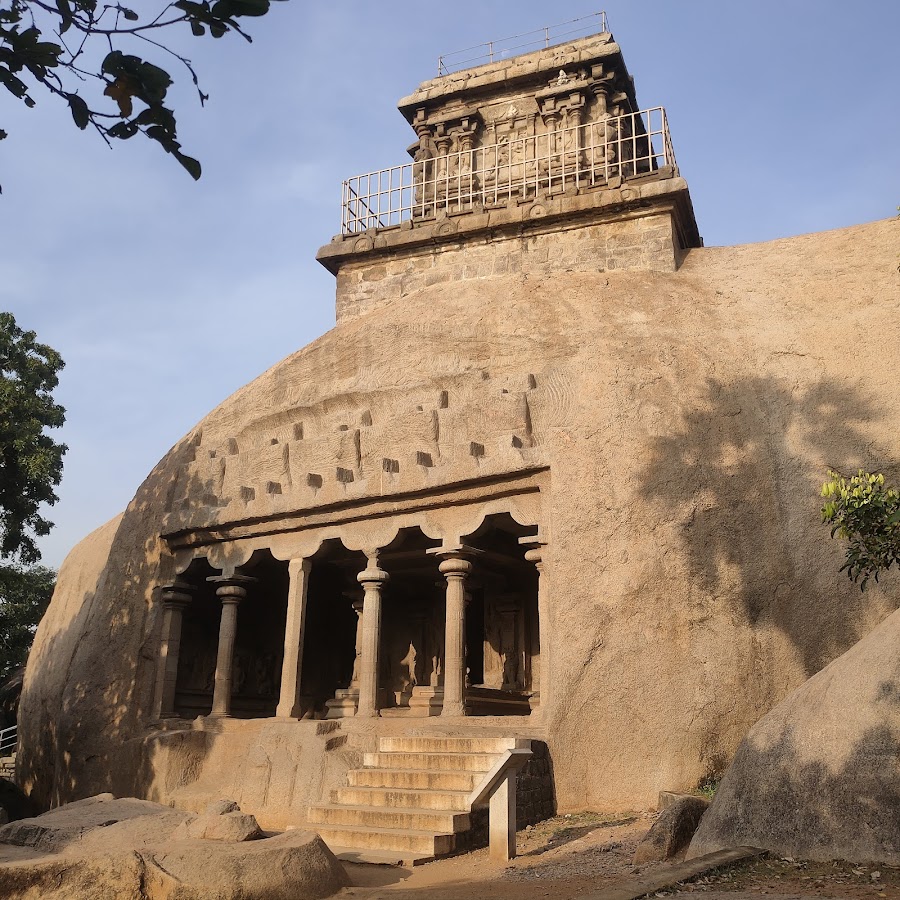
Mahishamardini Cave
The Mahishamardini Cave, also known as the Mahishasura Mardini Mandapa, is a rock-cut cave temple showcasing intricate carvings from the Pallava period. The cave is celebrated for its panel depicting the goddess Durga slaying the buffalo-demon Mahishasura, a powerful representation of good triumphing over evil. Other significant carvings include Vishnu reclining on Shesha and Trivikrama. The cave's architecture reflects the early stages of Dravidian art, offering a glimpse into the artistic prowess of the 7th-century Pallava dynasty. The cave's serene ambiance and detailed sculptures make it a must-visit for art enthusiasts and history buffs alike. It's a relatively small cave, allowing for an intimate viewing experience of the artwork.